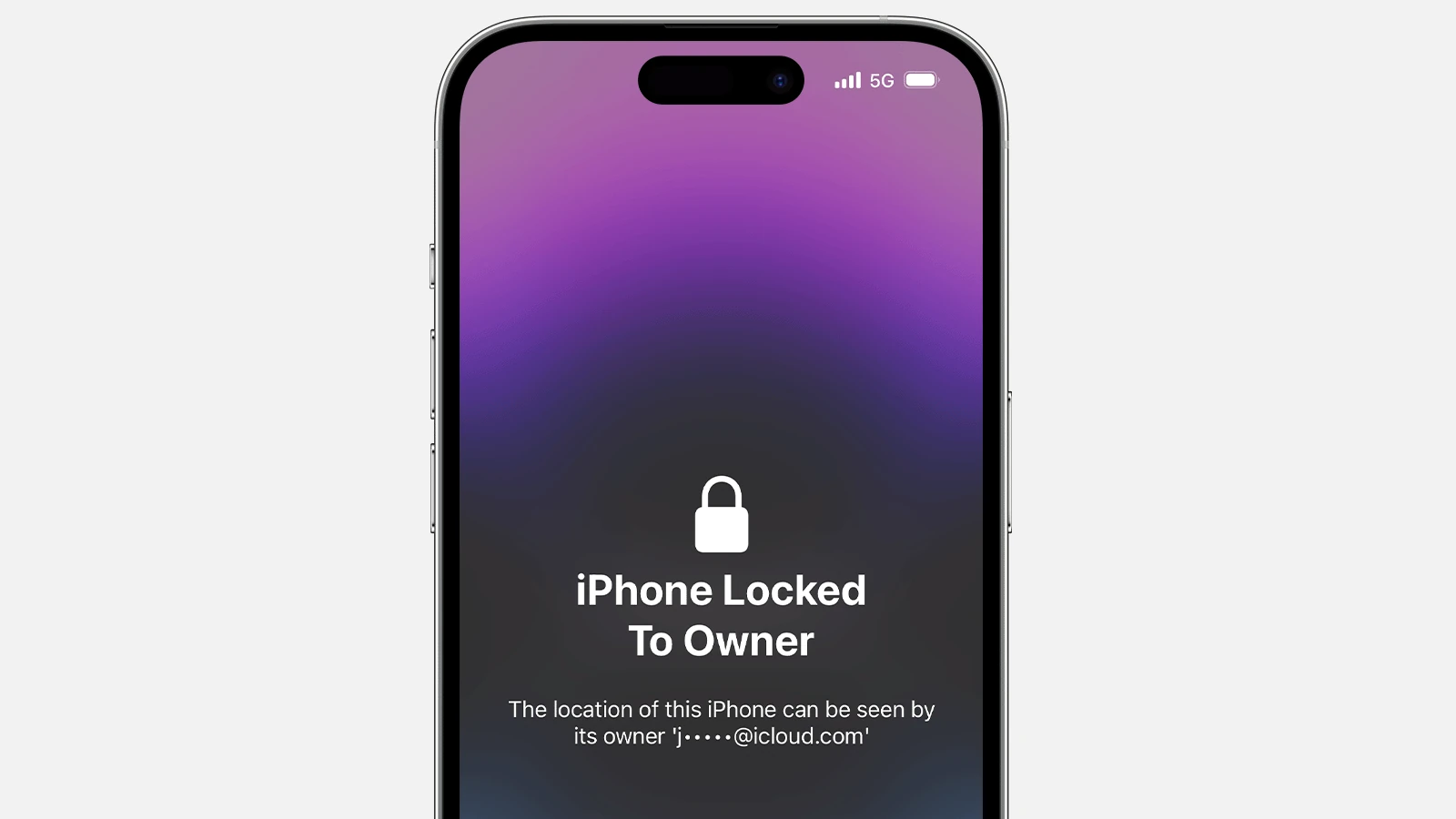Activation Lock is a powerful security feature for Apple devices. It helps protect your iPhone, iPad, and Mac from unauthorized access if lost or stolen. The Activation Lock bypass code allows you to remove Activation Lock without the previous owner’s Apple ID and password.
This code is especially useful for IT admins managing company devices or individuals who’ve acquired a secondhand Apple product. You can disable Activation Lock remotely using mobile device management tools like Microsoft Intune.
For personal devices, Apple’s Find My app manages Activation Lock on iOS, iPadOS, and macOS. It’s tied to your Apple ID, adding an extra layer of security. If you’re buying a used Apple device, always ask the seller to remove Activation Lock before completing the purchase.
| Device Type | Activation Lock Support |
|---|---|
| iPhone | Yes |
| iPad | Yes |
| Mac | Yes (with T2 chip or M1) |
| Apple Watch | Yes |
| iPod Touch | Yes (6th gen and later) |
Apple’s Activation Lock is a powerful anti‑theft feature built into Find My iPhone/iPad/Mac. It prevents anyone from using a lost or stolen device without the owner’s Apple ID and password.
For organizations (schools, businesses, IT admins), Apple provides a secure way to unlock devices they manage: the Activation Lock Bypass Code.
🛠️ What Is an Activation Lock Bypass Code?
- A unique, system‑generated code tied to a supervised device.
- Created by Apple School Manager (ASM), Apple Business Manager (ABM), or a Mobile Device Management (MDM) solution.
- Lets IT administrators remove Activation Lock without needing the user’s Apple ID.
➡️ This is not a hack — it’s an official Apple feature for organizations managing fleets of devices (source: Apple Developer Documentation).
📲 When Is It Used?
- A student or employee leaves, but their iPad/Mac is still locked to their personal Apple ID.
- A company repurposes or reassigns devices.
- An IT admin needs to reset and redeploy devices without waiting for the user.
🔧 How to Retrieve & Use the Bypass Code
1. Via MDM (e.g., Jamf, Intune, Mosyle)
- Log into your MDM dashboard.
- Select the device that’s locked.
- Look for the “Activation Lock Bypass” or “Show Bypass Code” option (example: Jamf → Device → Actions → Show Bypass Code).
- Copy the code.
2. Enter the Code on the Device
- On the locked screen, when prompted for the Apple ID, select “Activation Lock Bypass” (if available).
- Enter the bypass code instead of the Apple ID.
- The device will unlock and can be set up again.
🔐 Security Notes
- Only supervised devices enrolled in ASM/ABM or MDM generate bypass codes.
- The code is unique per device and should be stored securely in your MDM.
- This feature is not available for personal use — if you bought a second‑hand iPhone/iPad that’s iCloud‑locked, you must contact the original owner or Apple Support with proof of purchase (source: Zecurit Legal Guide).
🚫 What You Should NOT Do
- Don’t use third‑party “unlock tools” or shady services — they’re often scams or illegal.
- Don’t attempt to bypass Activation Lock on a device you don’t own or manage — that’s considered theft.
✅ Final Takeaway
The Activation Lock Bypass Code is a legitimate Apple feature designed for schools and businesses to manage supervised devices. If you’re an individual user, the only safe and legal way to remove Activation Lock is:
- Enter the original Apple ID and password, or
- Contact Apple Support with proof of purchase.
Understanding Activation Lock
Activation Lock is a security feature designed to protect Apple devices from unauthorized access. It ties the device to the owner’s Apple ID, making it difficult for thieves to use or sell stolen devices.
The Purpose of Activation Lock
Activation Lock deters theft and protects user data. When enabled, it requires the owner’s Apple ID and password to erase or reactivate the device. This feature significantly reduces the resale value of stolen Apple products.
Activation Lock activates automatically when you turn on Find My on your iPhone, iPad, Mac, or Apple Watch. It remains active even if the device is erased, ensuring long-term protection.
The feature has led to a notable decrease in Apple device thefts since its introduction. Law enforcement agencies have praised its effectiveness in deterring crime.
How Activation Lock Works
Activation Lock links your device to your Apple ID. When you set up a new device or reset an existing one, you’ll need to enter your Apple ID credentials to proceed.
If someone tries to:
- Turn off Find My
- Erase the device
- Reactivate the device
They’ll be prompted for your Apple ID and password. Without these, the device remains locked and unusable.
For added security, two-factor authentication is required. This means even if someone knows your password, they can’t bypass Activation Lock without access to your trusted devices or phone number.
Activation Lock on Different Apple Devices
Activation Lock works across various Apple devices, with slight differences in implementation:
| Device | Activation Lock Availability | Notes |
|---|---|---|
| iPhone | iOS 7 and later | Always on when Find My is enabled |
| iPad | iOS 7 and later | Always on when Find My is enabled |
| Mac | macOS Catalina and later | Requires T2 security chip or Apple silicon |
| Apple Watch | watchOS 2 and later | Automatically enabled with paired iPhone |
On iPhones and iPads, Activation Lock is always on when Find My is enabled. For Macs, it’s available on models with the T2 security chip or Apple silicon, running macOS Catalina or later.
Apple Watch Activation Lock activates automatically when you set up Find My on your paired iPhone. It provides an extra layer of security for your wearable device.
To check if Activation Lock is on, you can use Apple’s Activation Lock status tool. You’ll need the device’s serial number or IMEI/MEID. This tool helps verify the status of used devices before purchase.
Activation Lock Bypass Code
Activation Lock Bypass Codes provide a way to unlock Apple devices when the original owner’s credentials are unavailable. These codes are crucial for managing devices in organizational settings and recovering access in certain situations.
What is an Activation Lock Bypass Code?
An Activation Lock bypass code is a unique string generated for supervised Apple devices. It allows you to unlock a device without the original Apple ID and password. This feature is especially useful for organizations managing multiple devices through Mobile Device Management (MDM) systems.
Bypass codes are device-specific and change under certain conditions. For example, a new code is created when you:
- Enroll the device in MDM
- Unenroll it from MDM
- Erase the device
Organizations can retrieve these codes through MDM solutions integrated with Apple School Manager or Apple Business Manager.
Generating a Bypass Code
To generate an Activation Lock bypass code, your device must be supervised and enrolled in an MDM solution. The process typically involves:
- Enrolling the device in your MDM system
- Ensuring the device is supervised
- Using the MDM to request the bypass code from Apple’s servers
MDM solutions like Microsoft Intune can store these codes automatically. It’s crucial to securely back up the codes, as they’re essential for managing Activation Lock on your devices.
Using the Bypass Code
When you need to unlock a device, follow these steps:
- Power on the locked device
- At the Activation Lock screen, enter a blank username
- Use the bypass code as the password
For wiped devices, you can access them directly with this method. In organizational settings, IT admins can use MDM tools to send the bypass code to Apple’s activation servers, unlocking the device remotely.
Remember, bypass codes are sensitive. Treat them like passwords and store them securely. Regular backups of these codes are essential, especially if you plan to change MDM providers.
| Bypass Code Use Cases | Benefits |
|---|---|
| Device Reassignment | Quickly repurpose devices without contacting previous users |
| Lost User Credentials | Recover access when Apple ID info is unavailable |
| Bulk Device Management | Efficiently manage large numbers of organizational devices |
Managing Activation Lock
Activation Lock is a crucial security feature for Apple devices. It helps protect user data and deter theft. Proper management of this feature is essential for organizations and individual users alike.
Removing Activation Lock
To remove Activation Lock, you need the device’s Apple ID and password. If you don’t have these, you can use the bypass code. For devices managed by an organization, the IT admin can disable Activation Lock remotely.
Steps to remove Activation Lock:
- Turn on the device
- Enter the Apple ID and password
- If you don’t have these, use the bypass code
Organizations using mobile device management (MDM) solutions can clear Activation Lock without the user’s credentials. This is helpful when employees leave or devices change hands.
Supervised Devices and Activation Lock
Supervised devices offer more control over Activation Lock. IT admins can enable or disable this feature remotely. This is useful for school or business-owned devices.
Benefits of supervision for Activation Lock:
- Remote management
- Prevents unauthorized reactivation
- Simplifies device reassignment
Supervised devices can have Activation Lock enabled by default. This adds an extra layer of security without user intervention.
Organizational Management of Activation Lock
Large-scale device management requires a strategic approach to Activation Lock. MDM solutions play a key role in this process.
Table: Activation Lock Management Features
| Feature | Description | Benefit |
|---|---|---|
| Bypass Code Storage | MDM stores device-specific codes | Quick lock removal |
| Remote Disable | Turn off Activation Lock without physical access | Efficient device management |
| Automated Enablement | Automatically enable on supervised devices | Enhanced security |
Organizations should secure and back up bypass codes regularly. This ensures continued access to devices even if MDM vendors change.
For company-owned devices, using Apple Business Manager or Apple School Manager is recommended. These platforms allow organization-linked Activation Lock, giving admins more control.
Troubleshooting and Support
Activation Lock issues can be frustrating, but solutions are available. Apple provides support channels and recovery options to help users regain access to their devices.
Common Activation Lock Issues
Users often encounter Activation Lock when setting up a used device or after a factory reset. The lock screen may display “This iPhone is linked to an Apple ID” or “Activation Lock” messages. You might face issues if you forgot your Apple ID password or can’t remember the previous owner’s details.
Some users report problems with Find My iPhone not turning off properly. This can prevent Activation Lock from disabling. Devices running older iOS or macOS versions may have compatibility issues with newer Activation Lock features.
A faulty internet connection can also hinder the activation process. Make sure you’re connected to a stable network when trying to bypass the lock.
Contacting Apple Support
If you can’t resolve Activation Lock issues on your own, Apple Support is your next step. You can reach out via phone, chat, or email. Before contacting support, gather your proof of purchase and device details.
Apple may ask for your device’s serial number or IMEI. You can find this information on the device’s settings or physically on the device itself. Be prepared to verify your identity and ownership of the device.
Support agents can guide you through additional troubleshooting steps. They may also initiate an Activation Lock removal request if you provide sufficient proof of ownership.
Recovery Options
If standard methods fail, you have several recovery options. For iOS devices, you can try using iTunes or Finder to restore the device. This process may require you to enter your Apple ID and password.
For Macs with Activation Lock, you can use Recovery Assistant to bypass the lock. Click Recovery Assistant in the menu bar and select “Activate with MDM key” if your device is managed by an organization.
In some cases, you may need to use a bypass code. This code is typically available to IT administrators for managed devices. If you’re an individual user, you’ll need to contact Apple Support to explore this option.
| Recovery Method | Applicable Devices | Requirements |
|---|---|---|
| iTunes/Finder Restore | iOS devices | Apple ID credentials |
| Recovery Assistant | Macs | MDM key (if applicable) |
| Bypass Code | iOS and macOS | IT admin access or Apple Support assistance |
Remember, Apple takes device security seriously. Always follow official channels and avoid unauthorized unlocking methods that could compromise your device or data.
Frequently Asked Questions
Activation Lock removal methods vary depending on the device and situation. Several options exist for bypassing this security feature on Apple products.
How can one remove the Activation Lock on an iPhone without the previous owner’s information?
Contacting Apple Support is the safest way to remove Activation Lock without the previous owner. You’ll need to prove ownership of the device. This method isn’t guaranteed to work in all cases.
Is it possible to disable the Activation Lock on an iPad?
Yes, you can disable Activation Lock on an iPad. The process is similar to iPhones. Sign in with your Apple ID and password to remove the lock. If you don’t have the credentials, contact Apple Support for help.
What steps are required to bypass the Activation Lock on a MacBook?
To bypass Activation Lock on a MacBook:
- Restart the MacBook
- Press Command + R during startup
- Select “Activate Mac” from the menu
- Follow the prompts to sign in with your Apple ID
Can the Activation Lock be removed without an Apple ID and at no cost?
Removing Activation Lock without an Apple ID for free is challenging. Official methods require the Apple ID or proof of ownership. Free third-party tools exist but may not be reliable or legal.
How do I navigate an MDM Activation Lock on my device?
To remove an MDM Activation Lock:
- Contact your organization’s IT department
- Ask them to remove the device from MDM
- They’ll need to unenroll it from their management system
Is factory resetting a device a viable method to circumvent the Activation Lock?
Factory resetting doesn’t bypass Activation Lock. The lock is tied to the Apple ID, not the device’s data. You’ll still need to enter the Apple ID and password after resetting.
| Method | Requires Apple ID | Cost | Success Rate |
|---|---|---|---|
| Apple Support | No | Free | Moderate |
| Owner Assistance | Yes | Free | High |
| Third-Party Tools | No | Varies | Low |
| Factory Reset | Yes | Free | N/A |







